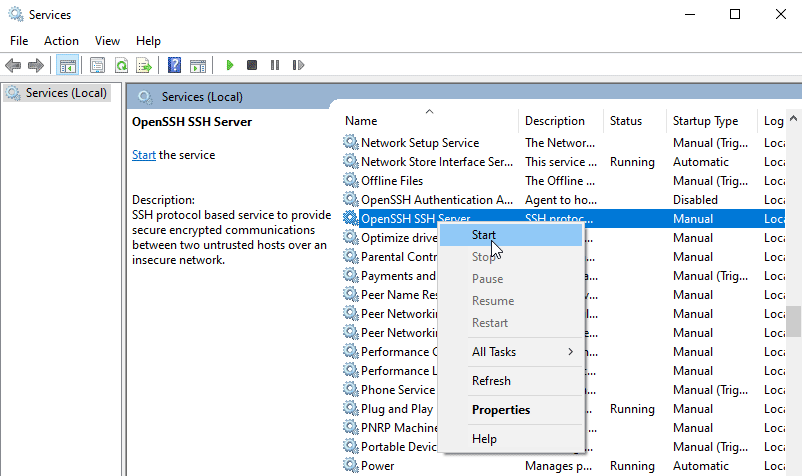

Connect with an SSH keyīefore we can connect to our server (e.g. Both OpenSSH components can be installed using Windows Settings on Windows Server 2019 and Windows 10 devices. If you used the default file as above, your private key will be created at ~/.ssh/id_rsa and your public key will be at ~/.ssh/id_rsa.pub. When you see the entry, click Run as Administrator. Click the Start button and type PowerShell.
#OPENSSH WINDOWS FREE#
Your public key has been saved in /c/Users/username//.ssh/id_rsa.pub.ĭ5:96:01:96:7a:63:25:93:a0:d6:65:0b:1a:a3:e7:05 key's randomart image is: The first thing to do is open PowerShell with admin privileges. OpenSSH is abbreviated for Open Secure Shell, OpenSSH is a free suite of tools (similar to the SSH connectivity tools) that help secure your network. Your identification has been saved in /c/Users/username//.ssh/id_rsa. If not, create a new private key like this (type text is in bold): PS> ssh-keygenĮnter file in which to save the key (/c/Users/username//.ssh/id_rsa): Įnter passphrase (empty for no passphrase): your-super-secret-passwordĮnter same passphrase again: your-super-secret-password Passwords are fine, but for extra security we can use a password-protected key instead. In particular, it cannot handle ssh certificates yet (it is.

Pat yourself on the back, you've connected with SSH from Windows! Easy, right? Although it is pretty much the default ssh client for Windows use, it does have some shortcomings. Ssh you enter your password, you should be logged in to the remote server.


 0 kommentar(er)
0 kommentar(er)
